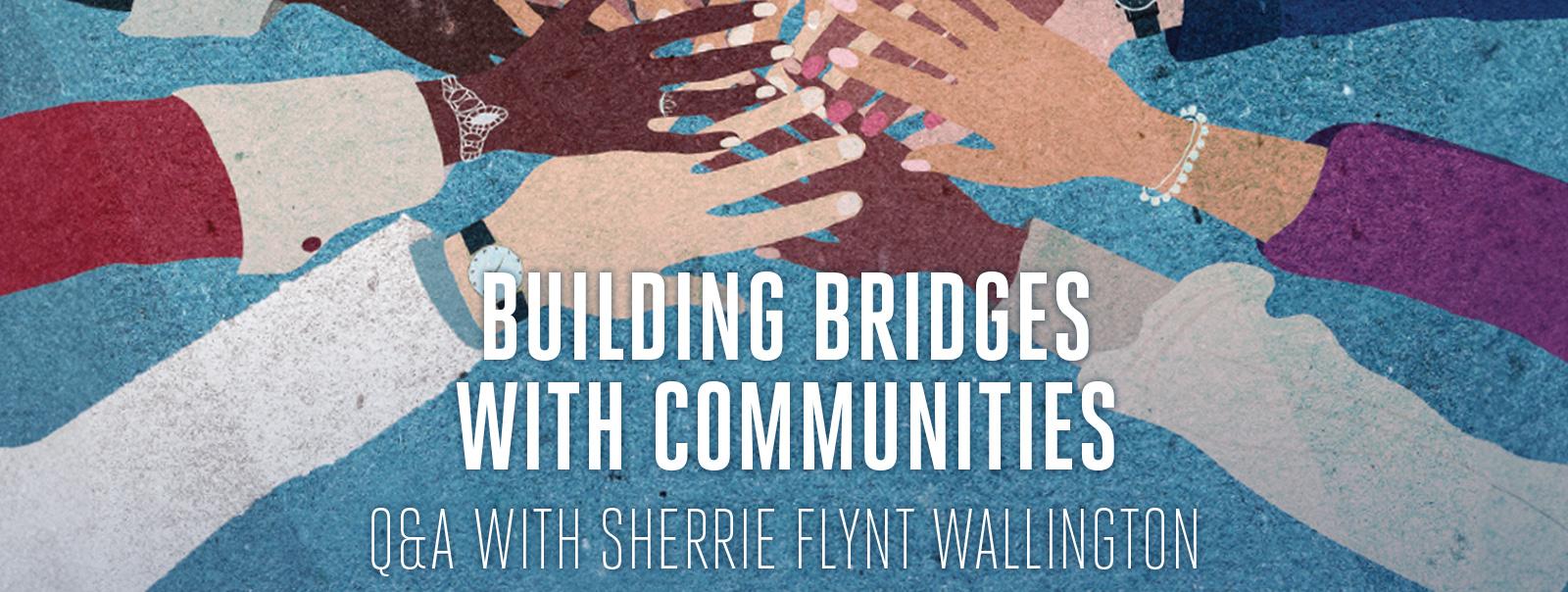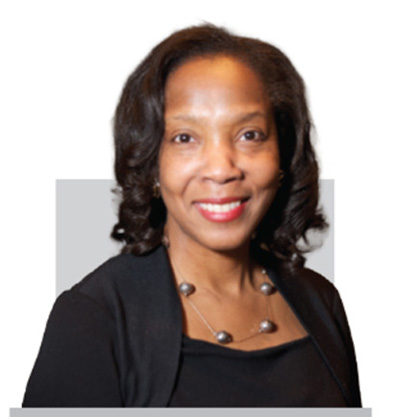Building Bridges with Communities
In December 2020, George Washington University School of Nursing Associate Professor Sherrie Flynt Wallington and colleagues launched a research project focused on the roles of fathers in addressing disparities in maternal mortality.
Funded with a grant from the Robert Wood Johnson Foundation, Wallington and her collaborators—GW Nursing Professor Y. Tony Yang and D.C. Ward 8 Community Partner Terrance Staley with the local nonprofit Alliance of Concerned Men—worked closely with Black fathers from Washington, D.C., where the maternal mortality rate is twice the national average and especially high among Black mothers.
It’s the kind of community-based research project that depends heavily on data gathered from the community through focus group discussions, interviews and surveys.
Here, Wallington talks about how she works with communities and why building relationships and trust rests with the researcher: “The onus should not be on them to trust us but on us becoming more trustworthy.”
Q: Why has there sometimes been a lack of trust between researchers and communities?
A: There’s a concept called helicopter research, where researchers go into communities and collect all this data and then just leave the community without leaving anything for it. It’s important to not just do the research in the community but to do it with the community. This is an important distinction. During COVID especially, I would hear a lot that the community doesn’t trust us. But we haven’t always given them a reason to trust us. The onus should not be on them to trust us but on us becoming more trustworthy. I think that starts by being honest, transparent and by communicating often. I also think, in times of crisis such as during the pandemic, we have to get these populations to the table at the beginning, not at the end. That’s how you build sustained trust, and it takes time and patience.
Q: How do you engage the communities you work with?
A: It’s important to not go in and say, ‘This is what we need.’ To do this kind of community-engaged, participatory research, you have to be able to show the community you are interested in a sustainable relationship. You’re in for the long haul and not just there to collect a letter of support or data, then you leave and they never hear from you again.
I also go to a lot of meetings in the community. Nothing can replace the value of face-to-face interactions. Here in D.C., one of the groups I work with is the Ward 8 Health Council. Many communities like Ward 8 have been taken advantage of by researchers, so they’ve started councils; researchers or individuals wanting to do work in the community must first be vetted by the council.
"One of the good canons of research is you always leave the community better off than you found it."
- Sherrie Flynt Wallington
I’ve also built great relationships with D.C. public housing, recreation centers, and other grassroots and advocacy groups, as well as the D.C. Department of Health; we have done community workshops together, and the knowledge I have gained from my community partners has been invaluable. Sometimes we host town hall meetings where we aren’t asking for anything other than building trust with the community by listening to their needs and understanding their priorities. It’s about being there for them in their time of need, and in theory, when you need something, they will be there for you, too. One of the good canons of research is you always leave the community better off than you found it.
Q: How do you end a project like your maternal mortality project with a community?
A: We hope once our data is analyzed to take the findings back to the community with infographics and have a town hall meeting. Of course, we’ll do our peer-reviewed publications, but this is a community-engaged study focused on father involvement, so it’s important to us to bring those results back to the community.
We plan to do that by having our community partner lead the dissemination plan and conduct workshops, webinars and town hall meetings.
Q: What advice do you have for researchers—especially young researchers—about how to do community-based research?
A: Don’t go into a community with preconceived notions. Don’t do all the talking. Let them talk to you first. That was such an important lesson to me. Also, I always make an effort to go to the community; I rarely have them come to me. Many of the community members say that they want to work with people who will help to develop programs in their community and that will come to them, so you will often find me on Alabama Avenue and Benning Road in Southeast D.C. That’s how you really create trust and relationships to help build bridges and find solutions. I’m excited to see how our young people, especially many of our GW students, are really interested in working in communities. They have a passion for social justice and health equity.
Q: How does a good relationship with a community also make for better research?
A: Much of my research funded by the National Institutes of Health and foundations was truly because of ideas that were first generated by engagement with the community. In addition, having a relationship with community members enables you to get to the right research questions and helps you know for sure you’re asking the right questions for the best impact. I also know that because of my relationship with the community, my data collection tools and analyses are more rigorous and more robust because community members are subject-matter experts on issues that directly impact them.



